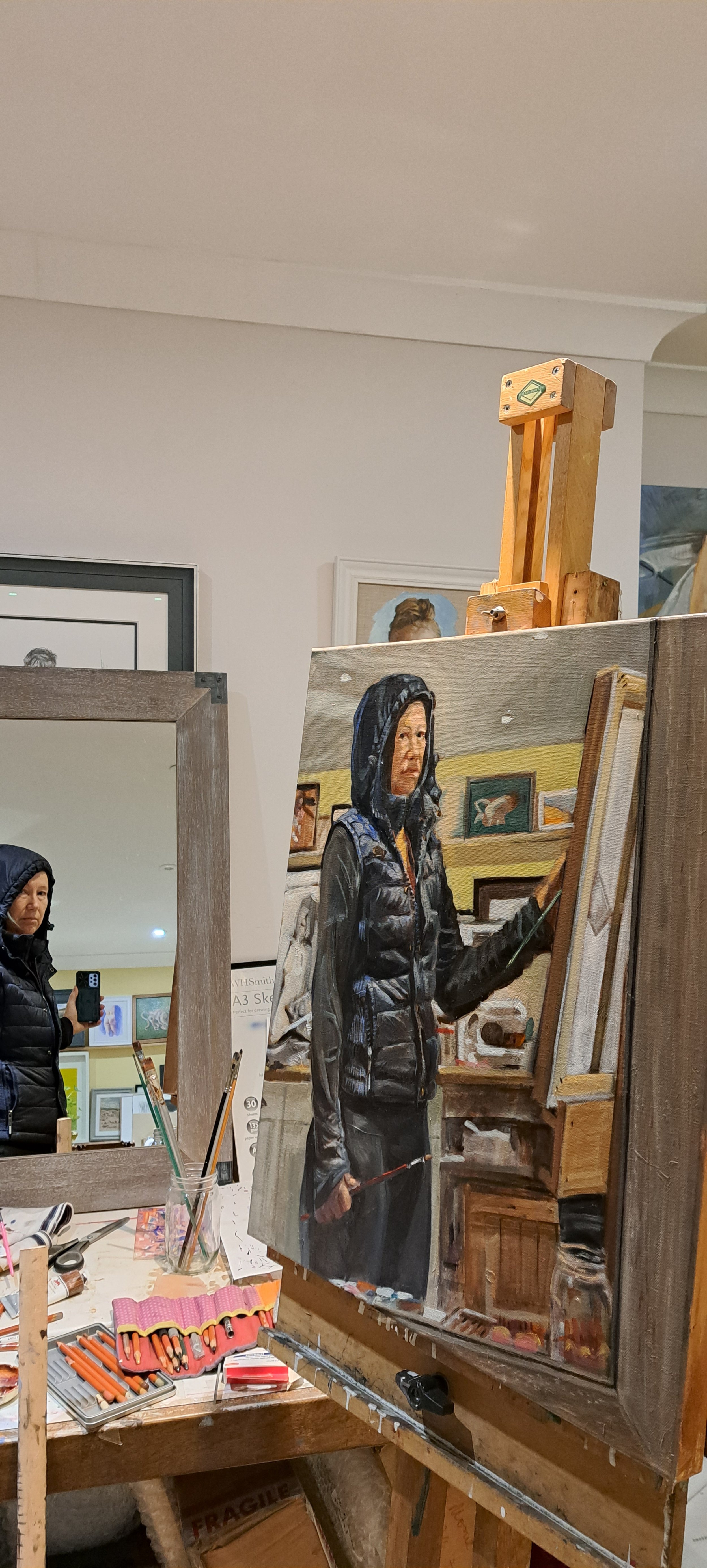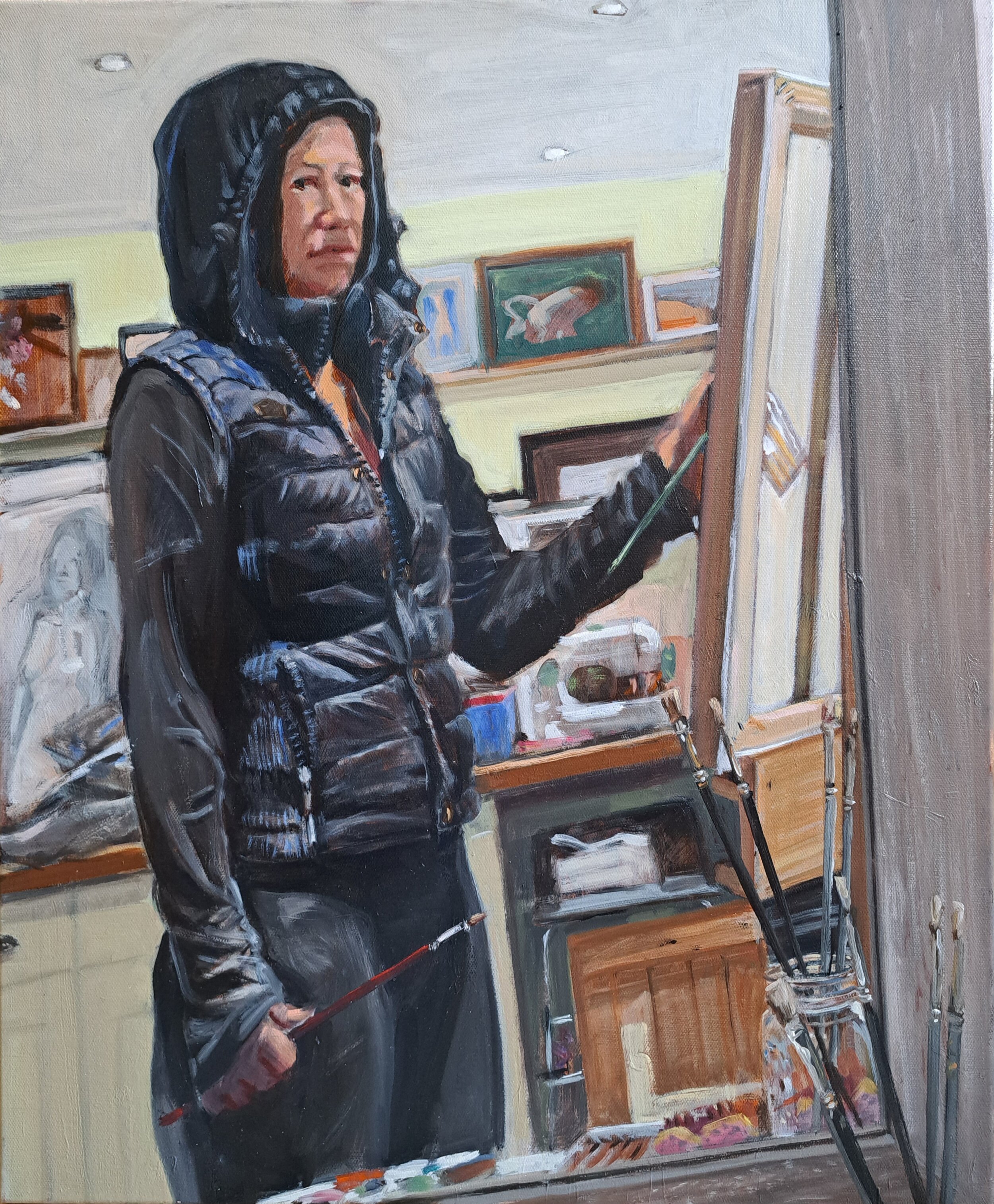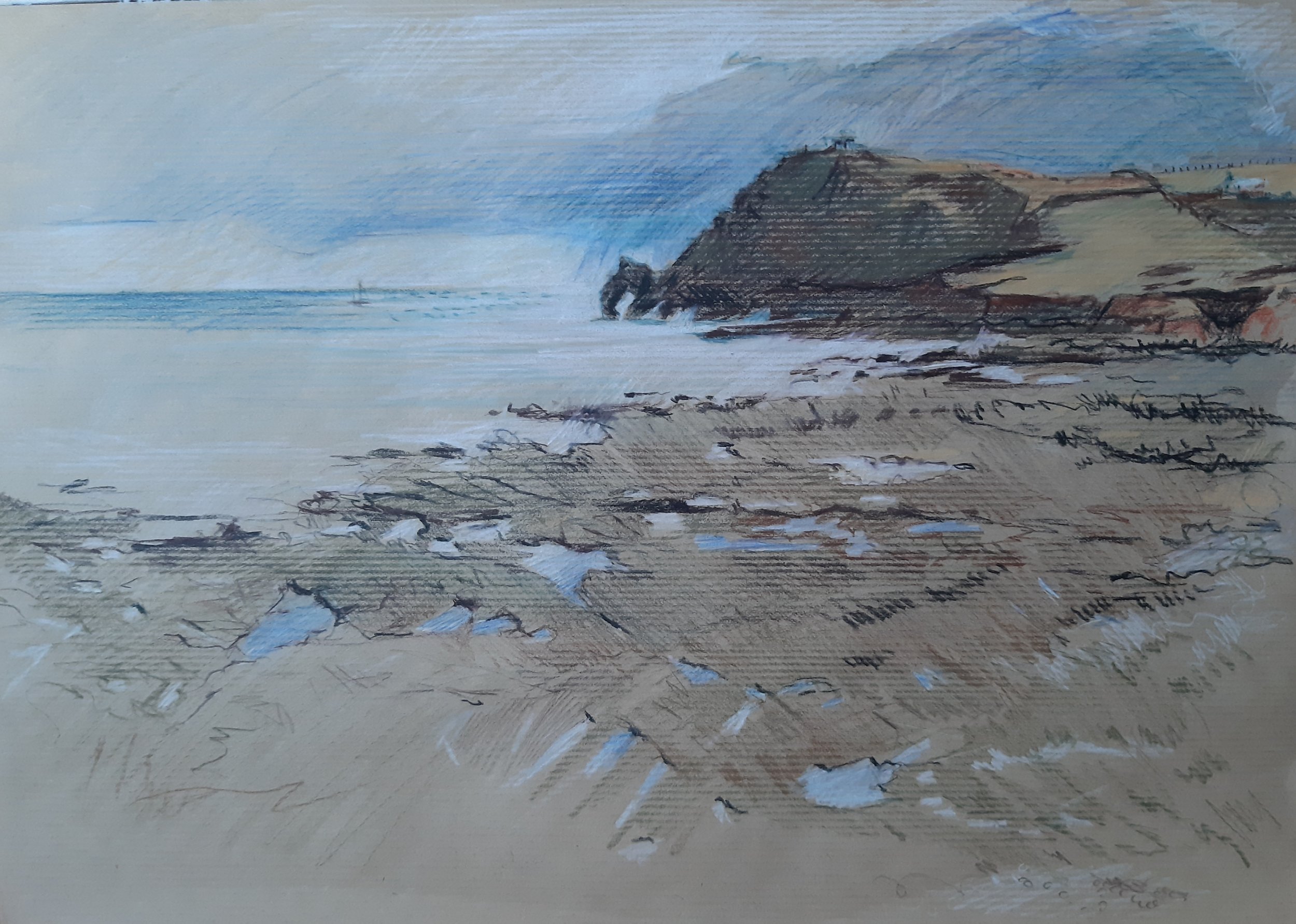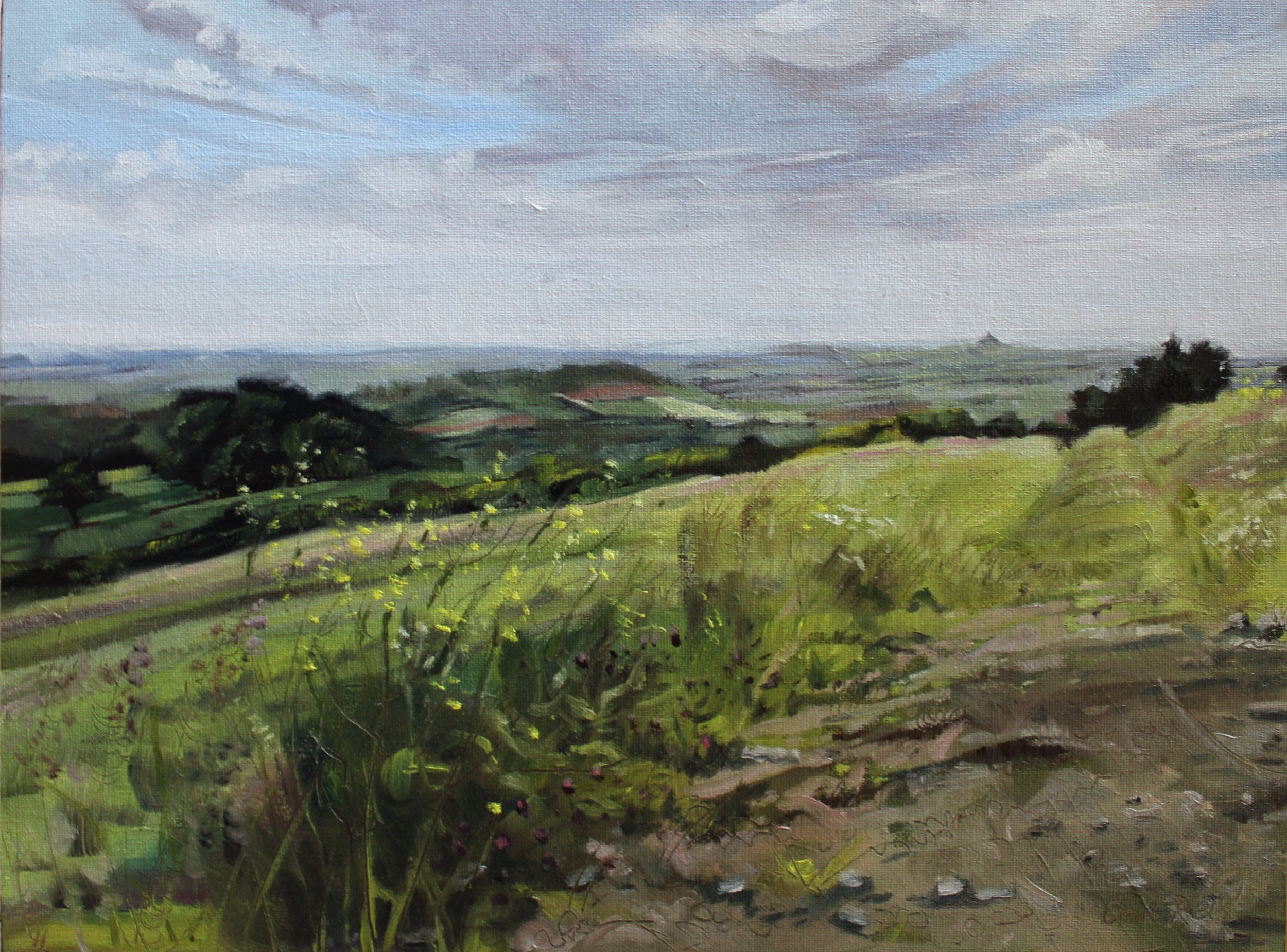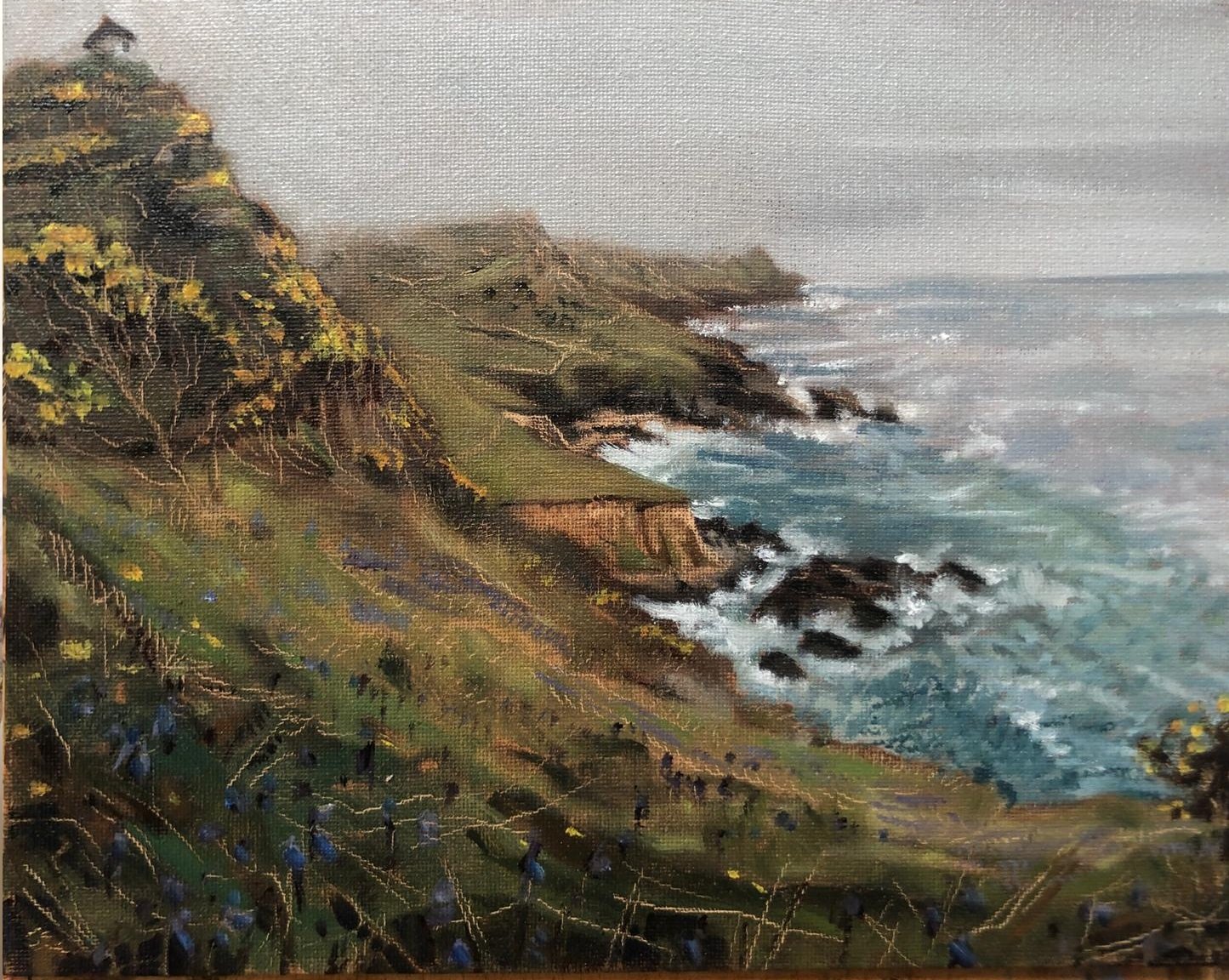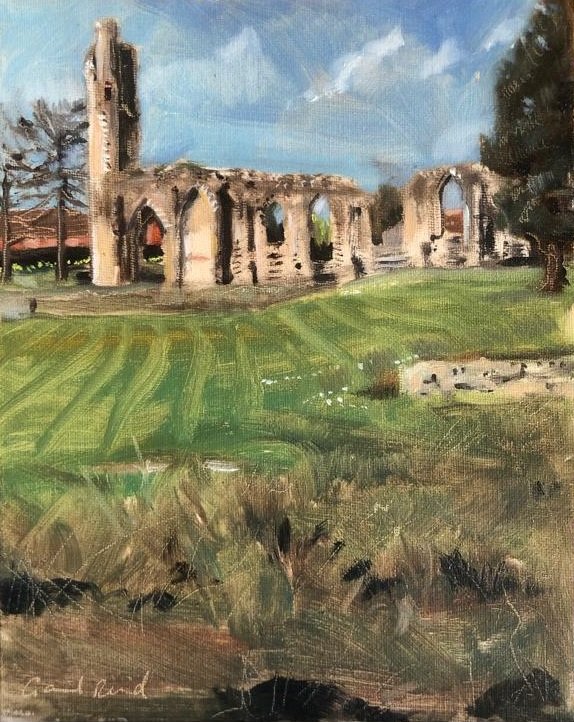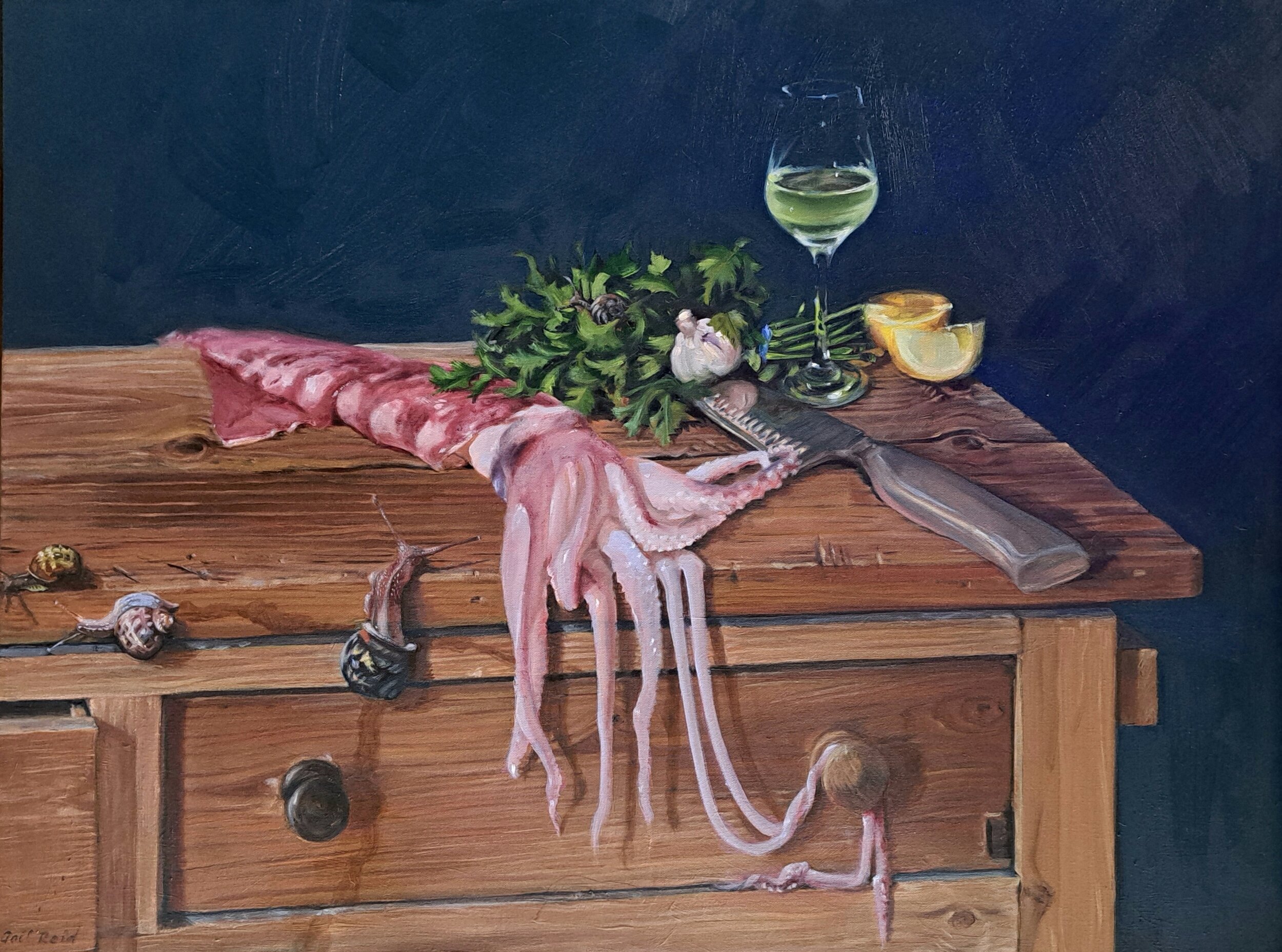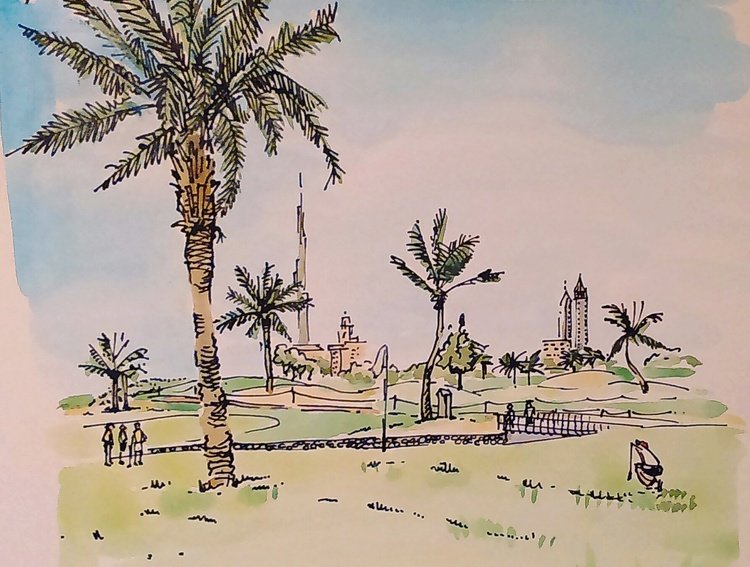ARTIST INTERVIEW: Gail Reid
Gail Reid
Tell me about yourself. What ignited your passion for art?
I have always loved making: the stillness, focus, and incremental progress that comes with mindful practice. My dad was an architect. We were temperamentally very similar: he taught 10-year-old-me how to shade a sphere, and count in binary. Childhood was idyllic until he died of lung cancer (don't smoke, kiddos) during the school holidays. Our mum (now a grieving pharmacist going through a tough menopause) went into overdrive. She showed us how to make curtains, lay bricks, keep accounts, keep house, cook a meal from an empty fridge, pull out into moving traffic with a cheery wave, demand high, and make a perfect cup of tea. She took us to lots of galleries and concerts, expressed her rage and love fully, and had boundless enthusiasm for everything we produced. All of the above ignited my passion for art.
Why did your 3 years spent in Dubai encourage you to pursue a career in art?
Moving to Dubai with a very young family was incredibly challenging, even though we were financially and logistically cosseted compared to the vast majority of immigrant workers there. In many peoples' eyes we lived the high life for 3 rollercoaster years. When our youngest child started school, having a 'non-working' visa, I decided that was the best chance I'd ever get to follow my dream to pursue art. I joined Tashkeel (an organisation which supported artists with facilities, studios, free lunch, gallery space and workshops). I was deeply influenced by the incredible arabic calligrapher Wissam Shawkat and Saudi artist Hadil Moufti, and took brilliant workshops run by Beth Derderian on becoming a professional artist. Lucky to stumble into Dubai's lively nascent art community, I exhibited (link to catalogue ), took a regular stall at the Arte (Artizans of the Emirates) market selling pictures, joined the vibrant local Urban Sketchers group, did event sketching, a GCSE drawing workshop, painted the set for the school production, sketched at the camel farm, and took portrait and soft toy portrait commissions.
One of countless camel drawings!
Your self portrait, ‘After a cold blustery run’ captures yourself in your running kit, in your studio. Why is this composition the best representation if you?
The painting and composition are completely spontaneous. I needed to produce something from life for that day's 'Strada Easel Challenge', so grabbed the bathroom mirror and propped it against the wall on my painting table (that was, incidentally, made out of a door by my dad). In the background are many of the pictures I've made over the years, some available for scrutiny on my website, together with the omnipresent sewing machine. In the foreground is a pencil roll made for me by my daughter.
How do you portray an individual’s personality through your portraits? What is the key to establishing a likeness?
I think a lot of the truth in a portrait, and in fact also an artist's 'style', should be left to emerge without contrivance, simply by doing your best to observe and record on paper/canvas. I adore portraiture, for the challenge, the connection with, and representation of people. When doing a 'proper' portrait, composition (particularly cropping and viewing angle) plays a role in conveying character. The context (background/clothing/posture) can contribute a lot too. I wrote more ideas and examples on capturing character here, and likeness here. Having said that, I think likeness is overrated - I'd far rather have a wonky portrait of me that captures a certain something, than a perfectly crafted likeness. But I'm probably in the minority on that one!
Judgement (RPS Annual Open 2022)
How can a clothed figure, compared to a nude figure, change the narrative of a piece?
Hmmmm. That's a really tricky one. There are so many different ways that clothing (or lack of it) can feature in narrative. I love how clothing can express movement, and thought it was telling that the Royal Portrait Society chose 'clothing' as their theme for the 2023 Annual Open Exhibition... textiles are a great vehicle for artists to flex how they render texture. I find the way women have historically been portrayed unclothed in paintings largely problematic - thick with objectification, disempowerment and conformity to ideals. This served titillation, voyeurism, and the male gaze at the expense of relatable narrative. There is a lot more awareness of this now, and I am much encouraged by contemporary portrayal of the figure in fine art, even as 'media' plays catch-up. Still, at least artists of yore were allowed to portray nudity, however disappointingly - a liberty that cannot be taken for granted, thanks to conservatism and 'the algorithm'. For me, Egon Schiele and Lucian Freud broke some ground, in terms of presenting the body more originally. I am more inspired and impressed by how Käthe Kollwitz, Paula Rego, and Jenny Saville convey narrative via the clothed/unclothed figure.
I love life drawing, some of my favourite commissions have been where clients have come to pose for portraits without clothing, be that to celebrate themselves or to overcome body confidence issues.
What is the significance of the objects you choose to capture in your still life works?
I do quite like the traditional use of symbolism, in, for example; vanitas still lifes. But personally, I prefer playing with anthropomorphosis. For example; casting the dead squid as despairing/reaching out for help, and the snails as pointlessly optimistic. It's intended to be a bit of a dark situation comedy, but also (having always hated being 'told what I think') a mark of the ridiculousness of projection in general. I try to involve the viewer, using simple devices such as the knife extending into the foreground, the glass of wine, or (in Industry) the tablet and glasses. I like to play with perspective, making the viewer so close they're almost looming into the picture, and by triggering gut reactions with things like slimy snails and a cold glass of wine. My new toy is a convex mirror, so look out for that in future!
Industry
Thinking about your most recent work, what was your creative process? Describe the journey of the piece from start to finish.
My most recent work was a portrait commission of a couple on their wedding day. I used two photos, taken by a professional photographer, so the first step was to establish their consent to use the images. Every step was done in consultation with the client, and in this case they were very engaged, constructive, and happy to be involved. I had to adjust the perspective in one of the photos to make a credible 'splice' of the two, and was able to take little elements from each. I use a Camera Lucida app on my tablet to project the composite photo onto the canvas, and was happy the client agreed to let me make it a really tall format. I start with a fairly unsightly few underpainting in burnt umber acrylics, then block in colour with oils. Thereafter, I just build up the picture in oil paints on that scaffolding, sharing progress shots and taking account of feedback along the way. Because it was quite small, and the figures were full length, the faces were about 6cm high, so I ended up using a lot of very small brushwork to get good likenesses. Anticipating that would be the main challenge, I thought better to focus on those faces once the background was blocked in. Compared to the faces, the rest of the painting was relatively easy. Inspired by Frances Bell's process, I kept working for quite a while after the painting seemed finished, fine tuning edges, and scumbling lighter tones over the flesh to enhance the modelling. Borrowing from Sargent I played with colour temperature in the folds of the white dress.
Which piece has been your favourite to work on, and why?
For commissions, my favourite piece was a pair of nude portraits, a celebration of two really fun clients, both totally at ease with their bodies, in their home. As well as the figures, there were lots of opportunities to explore texture, light, and interiors. I used canvases wrapped round deep box frames, and made full use of the sides, putting some of the details round there for a bit of 3d interest.
For personal work, I like whatever I'm doing at the time, and looking back through old work made from life transports me back to the moment it was made. This is one of the things I love about plein air painting:
Brighton Pier
If you could have a conversation with any artist, dead or alive, who would it be, and why?
I'd like to meet Velázquez. I love his appreciation of the 'common man', so feel he wouldn't be too up himself! I'm curious to know what he thought of his royal patron Philip IV, who pretty much monopolised him apart from a couple of extended trips abroad. I don't speak Spanish though, so would be perfectly happy just to sit in awe, watching him work.
Why do you think art is important in society?
Back in the day when I used to work on insurance software, it bothered me that the industry I'd fallen into wasn't exactly life-saving or noble. Having transitioned to art, I feel we need teachers, scientists, and effective politicians more urgently. That said, I think art has a huge role to play in questioning, challenging, representing, healing, and affirming the human condition. Art uplifts, not just by decoration, but by reflection. Selfishly, being 'in the zone' while making art, centres me more than anything else I have found.




